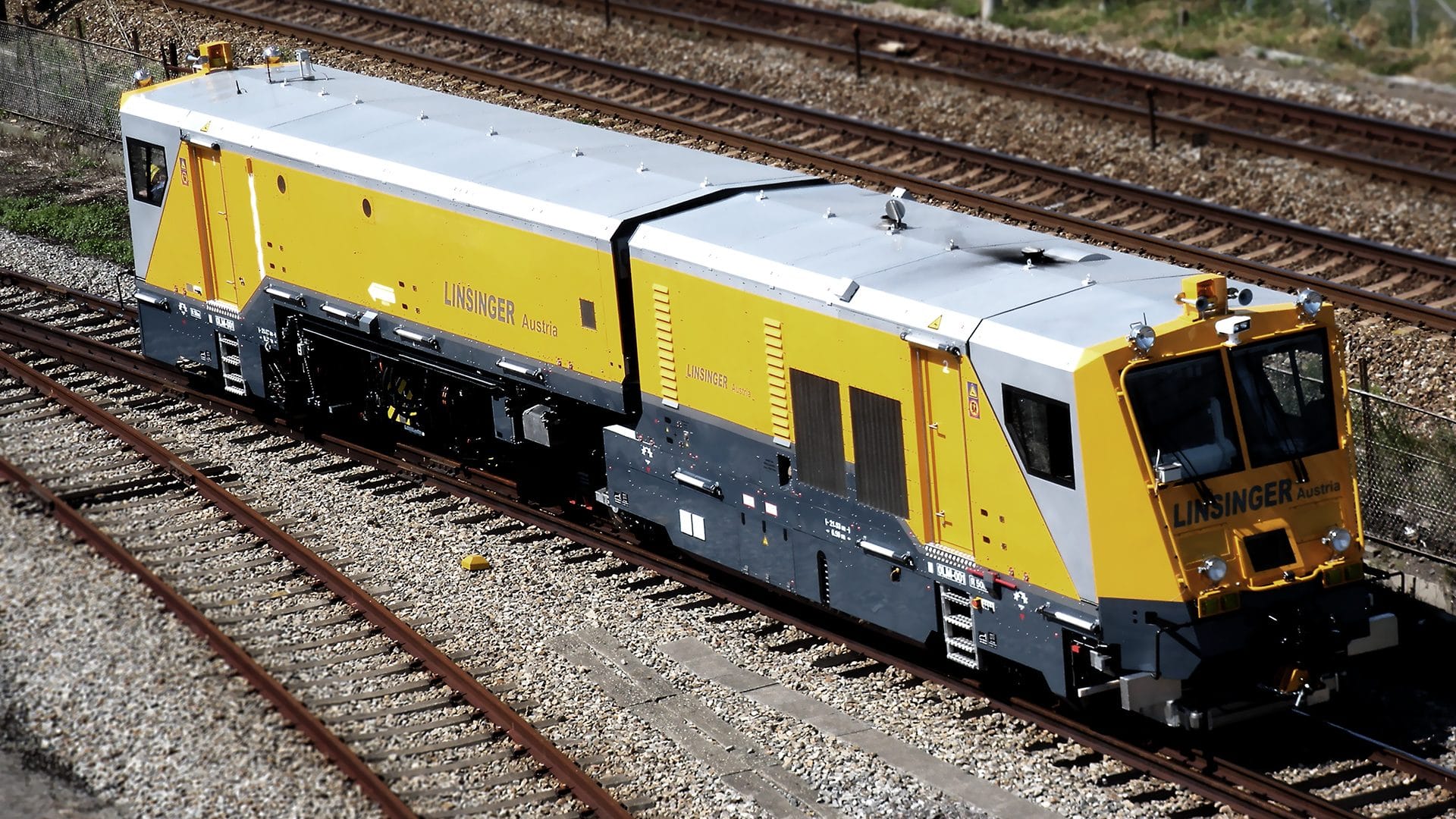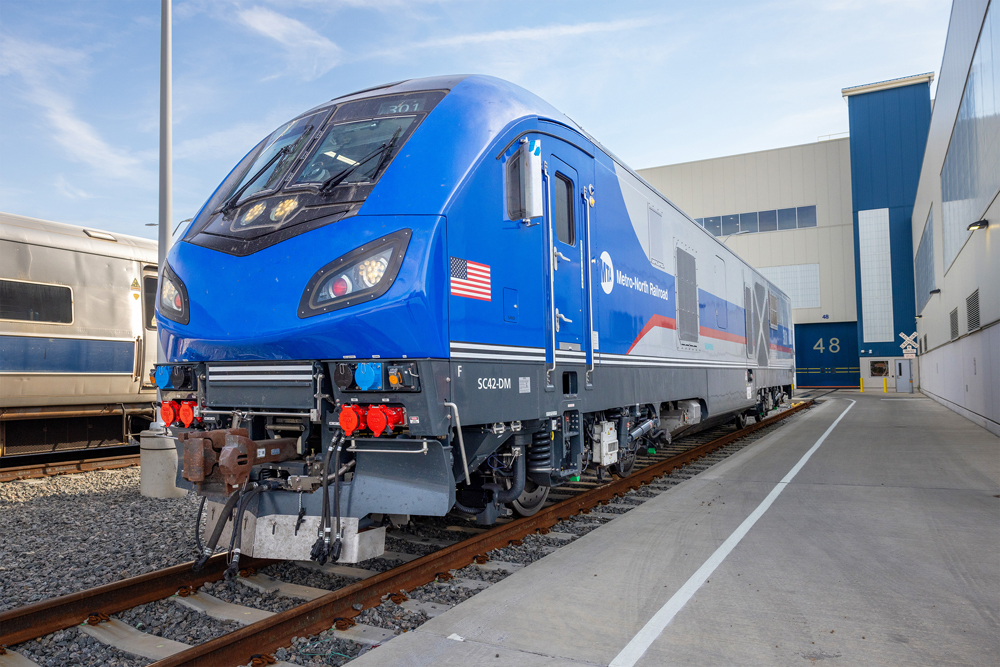The announcement came during a question and answer session Monday at the Wheel Rail Interaction conference’s Transit seminar in Chicago.
Richard Stock, milling technology manager for LINMAG, says that the companies have an order with LINMAG parent corporation Linsinger for a SF02T-FS rail milling machine similar to one already in use in Europe. LINMAG and Rhomberg Sersa are purchasing the machine jointly for what would be the first rail milling machine in North America.
Milling machines are common in Europe and use carbide-tooth wheels to literally shave or chip rails to remove microscopic cracks, spalls, and shells caused by rolling contact fatigue and other phenomena. European railroads, especially Germany’s Deutsche Bahn, also use milling machines to create or maintain rail profiles. Grinding machines, by contrast, use abrasive “stones” to grind away steel to remove deformities or shape rail. Grinding tends to generate sparks and heat on rail, while milling does not.
In general, an 88-stone grinding machine used on class I railroads can remove about 0.2 mm of rail at 6 to 8 mph in a single pass. Milling machines can remove 1.5 to 3 mm from the rail head and up to 5 mm from the gage corner, on the inside of a rail, in a single pass. The milling depth depends on the number and diameter of the cutting heads which move in a single pass over the rail at between 0.5 and 1.5 mph.
The machine that the companies expect to import from Austria will be modified for the North American market. Specifically, the milling machine will include a centered coupler pocket in place of European buffer beams, and will be powered by a yet-to-be specified Caterpillar diesel-electric motor in place of a standard diesel-hydraulic engine.
Stock and other milling promoters insist that milling will not replace grinding, but is complementary.
Other manufacturers and suppliers have promised to deliver a milling machine to North America in recent years, but have yet to deliver. Stock says the difference between earlier promises and this new pledge is that LINMAG and Rhomberg Sersa already have the machine in construction. He expects to have a customer signed in the near future.
Trains’ Technology column covered rail milling in the June 2014 issue.
Trains Magazine is the presenting sponsor of Wheel Rail Interaction.















I am surprised, Linmag has been milling rails here in Australia for a couple of years now. I thought North America got all the new rail technology before Australia.
Hi all, I will try to answer your questions and concerns:
@JOHN SUTHERLAND: Milling has variable metal removal capabilities. The focus is on 100% damage removal and rail profile restoration. By applying such a strategy rail life will be EXTENDED and not shortened (prevention of premature rail exchange).
@TROY STATEN: Rail Milling is a spark and dust free process. Thereby it can be used in fire and dust sensitive areas without special precaution (bridges, tunnels, stations…). And yes, the metal removal depth can be adjusted by the operator according to the local requirements.
@GEORGE BROWN: as indicated above, milling is a dust and spark free process. There are cost savings associated with have a reduced or no fire crew on site. Besides milling can be used in areas where fire restrictions would ban any grinding operation.
@ERASMUS GONZALES: Rail milling does not require any coolant medium to be applied. It is a completely dry process.
If you have further questions or concerns please feel free to ask here.
Thanks, Richard
The milling machine may be able to remove a greater depth, but that is substantially shortening the rail life. Grinding depths should be more than adequate where regular maintenance has been performed.
Is there an environmental issue? On a regular milling machine in a machine shop you need to use a water soluble oil. Water soluble doesn’t necessarily mean environmentally friendly, and that may be the holdup here
Why have USA railroads resisted purchasing this piece of rail maintenance? Perhaps it’s easier to just fight fires? I video’d a U.P. grinding machine at work on their nearby mainline. They had a crew on the “train” to pump water on fires, and two off-road vehicles to put out fires following the train. This was in the dry West, with dry foilage along the roadbed. Which is less expensive?
Sounds like one of the key advantages are less sparks and dust so less of a fire danger and the problems associated with grinding dust. As for how much material is removed I would imagine that can be adjusted by the operator.